Last Saturday as part of the Equine Production Class that I am taking at Pierce College, we went on a field trip to Santa Anita Race Track. Now, I've never been much of a horse race fan because it simply looked way too arcane with all the betting, odds, handicapping and all the technical stuff. Just never been my thing.
However, since the instructor was going to take us on a tour on the "backstretch" of the track and see how things work away from the public (backstage, so to speak), it seemed too interesting to want to miss (going there wasn't a requirement for the class).
We were to meet as a class at trackside at 7 am and that meant that I had to get up at about 5 am (talk about an early day!). From what we were told, the "day" at the track starts at 3 or 4 in the morning and doesn't end until about late afternoon after the last race.
So there I was at Santa Anita at about 6 am, in the dark and with some very vague instructions. I had to park a long ways off and then walk up and then had to seatch for the way in. After awhile I managed to find a way in and wound up at "Clockers", the trackside snack bar. It was definately bustling with all sorts of racing industry types and what appeared to be handicappers. At this point, horses were being exercised- "breathed" as the term goes and people were watching the various horses to see what they were doing and, I suppose, get clues about future performance.
After gathering, the instructor then took us over to the stands where we met a trainer friend named Darryl Vienna of his who would later give us teh tour. He gave us an overview of the Throughbred industry, a little background information about himself, and answered various questions. The one thing that stood out is that whiel he's done well in the the business, he was not optimistic about its future unless some fundamental changes were made- it just isn't attracting enough new race fans- i.e., younger folks and in many areas, the real estate which the track sits on is more valuable than what racing takes in, hence the push to turn them into other developments. It also didn't help that the management of most of the race tracks in the US belong to non-racing corporate entities who don't understand horses or racing- just recently, the corporation that owns Santa Anita declared bankruptcy.
Mr. Vienna also gave us an overview of training and preparing a horse for racing (not too many races, give them time to rest between races, etc.). He also noted that sometimes the owners push too much to race a horse too often, leading to various health problems. Finally, Mr. Vienna indicated that nobody is really happy about the new Federally mandated track surface and that it's actually increased injuries rather than reduce them. He predicted that in about two years, tracks would revert to older surfaces (it seems to be a mixed bag as to whether or not the new surface is good or bad).
In terms of getting into the training business, Mr. Vienna stated that not very many young people are interested in going into the business because of the long hours and low pay to start- bascially your day starts at 4 am and it's a 7 days a week proposition. You start off as a hot walker, exercising horses on the ground and then working your way up, depending on dedication, competence, and an affinity for horses. Mr. Vienna also mentioned that because the State regards horse racing as an entity that can affect the public good, licenses are required (issued by the California Horse Racing Board) of all people who work at the track, whether they're a jockey or a janitor or anything in between.
We also got to meed a jockey, a David Flores, and while he was no doubt a great source of information, it had to be coaxed out a bit (not everyone is a great public speaker :-0) but Mr. Vienna helped here. Mr. Flores was going to be riding one of Mr. Vienna's horses later that day (Fourth Race, 3/14/09). The one thing that stands out is that it doesn't take much to have a horrendous accident. But at the same time, you really can't think about that when you're riding- you have to stay focused on the job. Be alert but focus on the job.
Finally, we toured the stables themselves and while the public side of the track looks shiney and new, the backside was about one step up from some of the more dumpier boarding stables I've been to- very functional and with minimal upkeep. Just enough to make things safe for the horses and that's it. Apparently the trainers are not charged anything for using the stables (apparently, the track makes it up on the back end with their take of the winnings) but each horse has a well-bedded stall and they're well taken care of (I'd hope so, given the money tied up in the industry!). What was also funny was that being two and three-year olds, they were the most curious bunch, checking us out as we passed by (we were instructed to walk in the center of the barn asle and keep our hands to our sides- for very good reason, some of these two year olds will bite if you're not careful. Basically, crappy ground manners are tolerated so long as the horse wins races.
After a few more stops at the stabling paddock and the receiving barn (where the horses participating in a particular race are verified that they are the actual horses that are being advertised as racing), we ended the tour. By this time it was about 12 Noon and while the first race was a 1 PM, I left before the race since I wanted to go ride Max.
Overall, it was an interesting experience and certainly underscored that even with the current poor ecnonomic climate and decline of the horse racing industry, it still generates a lot of money and has some of the finest horses anywhere. It's also evident that there's going to need to be some changes in the way things are done if the industry is going to survive.
Some of the other notable things were that the exercise riders are extremely talented and competent- these juys can ride! (Duh!). They all have two-point stances to die for with some riding standing erect, Roman style. What was also amazing that the horse's demeanors ranged from calm to completely wacko with eyes rolling back into their heads and no matter what has happening, the riders were calm and completely in control- they'd be carrying casual conversations even if the horse was rearing or acting stupid.
Finally, the other thing that stuck out was the large number of Mexicans/Hispanics that make up the industry- it's clear that it's a better life than what's available in Mexico but the hours are long and the pay minimal. Without them, the industry would probably disappear overnight.
A very instructive day.
However, since the instructor was going to take us on a tour on the "backstretch" of the track and see how things work away from the public (backstage, so to speak), it seemed too interesting to want to miss (going there wasn't a requirement for the class).
We were to meet as a class at trackside at 7 am and that meant that I had to get up at about 5 am (talk about an early day!). From what we were told, the "day" at the track starts at 3 or 4 in the morning and doesn't end until about late afternoon after the last race.
So there I was at Santa Anita at about 6 am, in the dark and with some very vague instructions. I had to park a long ways off and then walk up and then had to seatch for the way in. After awhile I managed to find a way in and wound up at "Clockers", the trackside snack bar. It was definately bustling with all sorts of racing industry types and what appeared to be handicappers. At this point, horses were being exercised- "breathed" as the term goes and people were watching the various horses to see what they were doing and, I suppose, get clues about future performance.
After gathering, the instructor then took us over to the stands where we met a trainer friend named Darryl Vienna of his who would later give us teh tour. He gave us an overview of the Throughbred industry, a little background information about himself, and answered various questions. The one thing that stood out is that whiel he's done well in the the business, he was not optimistic about its future unless some fundamental changes were made- it just isn't attracting enough new race fans- i.e., younger folks and in many areas, the real estate which the track sits on is more valuable than what racing takes in, hence the push to turn them into other developments. It also didn't help that the management of most of the race tracks in the US belong to non-racing corporate entities who don't understand horses or racing- just recently, the corporation that owns Santa Anita declared bankruptcy.
Mr. Vienna also gave us an overview of training and preparing a horse for racing (not too many races, give them time to rest between races, etc.). He also noted that sometimes the owners push too much to race a horse too often, leading to various health problems. Finally, Mr. Vienna indicated that nobody is really happy about the new Federally mandated track surface and that it's actually increased injuries rather than reduce them. He predicted that in about two years, tracks would revert to older surfaces (it seems to be a mixed bag as to whether or not the new surface is good or bad).
In terms of getting into the training business, Mr. Vienna stated that not very many young people are interested in going into the business because of the long hours and low pay to start- bascially your day starts at 4 am and it's a 7 days a week proposition. You start off as a hot walker, exercising horses on the ground and then working your way up, depending on dedication, competence, and an affinity for horses. Mr. Vienna also mentioned that because the State regards horse racing as an entity that can affect the public good, licenses are required (issued by the California Horse Racing Board) of all people who work at the track, whether they're a jockey or a janitor or anything in between.
We also got to meed a jockey, a David Flores, and while he was no doubt a great source of information, it had to be coaxed out a bit (not everyone is a great public speaker :-0) but Mr. Vienna helped here. Mr. Flores was going to be riding one of Mr. Vienna's horses later that day (Fourth Race, 3/14/09). The one thing that stands out is that it doesn't take much to have a horrendous accident. But at the same time, you really can't think about that when you're riding- you have to stay focused on the job. Be alert but focus on the job.
Finally, we toured the stables themselves and while the public side of the track looks shiney and new, the backside was about one step up from some of the more dumpier boarding stables I've been to- very functional and with minimal upkeep. Just enough to make things safe for the horses and that's it. Apparently the trainers are not charged anything for using the stables (apparently, the track makes it up on the back end with their take of the winnings) but each horse has a well-bedded stall and they're well taken care of (I'd hope so, given the money tied up in the industry!). What was also funny was that being two and three-year olds, they were the most curious bunch, checking us out as we passed by (we were instructed to walk in the center of the barn asle and keep our hands to our sides- for very good reason, some of these two year olds will bite if you're not careful. Basically, crappy ground manners are tolerated so long as the horse wins races.
After a few more stops at the stabling paddock and the receiving barn (where the horses participating in a particular race are verified that they are the actual horses that are being advertised as racing), we ended the tour. By this time it was about 12 Noon and while the first race was a 1 PM, I left before the race since I wanted to go ride Max.
Overall, it was an interesting experience and certainly underscored that even with the current poor ecnonomic climate and decline of the horse racing industry, it still generates a lot of money and has some of the finest horses anywhere. It's also evident that there's going to need to be some changes in the way things are done if the industry is going to survive.
Some of the other notable things were that the exercise riders are extremely talented and competent- these juys can ride! (Duh!). They all have two-point stances to die for with some riding standing erect, Roman style. What was also amazing that the horse's demeanors ranged from calm to completely wacko with eyes rolling back into their heads and no matter what has happening, the riders were calm and completely in control- they'd be carrying casual conversations even if the horse was rearing or acting stupid.
Finally, the other thing that stuck out was the large number of Mexicans/Hispanics that make up the industry- it's clear that it's a better life than what's available in Mexico but the hours are long and the pay minimal. Without them, the industry would probably disappear overnight.
A very instructive day.




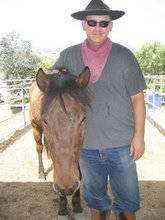
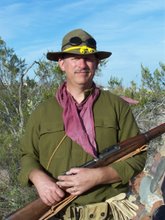
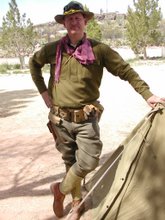
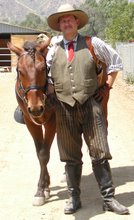
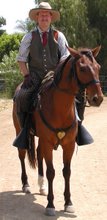

2 comments:
I'm leaving this comment here in hopes you'll see it...
I'm having problems with my thorowgood and wondered if you could help. The saddle is slipping when I mount from the left from the ground. Minx has a prominant backbone, steeple shaped back and I've never had this problem. I'm light and quick on my feet and don't weigh anymore than a year ago when I first got it.
The weird thing is that it doesn't slip when I mount from the right.
Is is possible that the padding on the left side has compressed, making it easier for the saddle to slip to the left? (I got it used and I assumed this saddle has always been mounted from the left).
Have you had any problems like this with your thorowgood. It's become such a problem I dread using it on the trail because it's not easy to get back on.
I've never had that specific problem with my Thoroughgood. The most I've had is with the holes on the billets tearing out within a year of my buying it. I find that while biothane makes for a decent synthetic saddle, it's not a good load-bearing material so I replaced the billets with leather.
You might want to first check the billets to see if there's any stretching- the left side billets are more likely to see more wear since people tend to tighten down the girth on the left first.
Also, check the flocking on the pads- it might be compressed on the left. I managed to kill the CAIR panels on a Wintec on the left side with hard riding (and I'm a big guy).
From what you're saying, it sounds like there's some uneveness. I assume that you're using a tight girth.
Finally, you might want to tack up as you usually do and have a friend watch closely as you mount (assuming your horse is comfortable with this). By close, I mean having them stand next to you and try to observe the saddle closely from the rear, and later the front. You're looking for irregularities in the pad wear that would allow such a shift. You might want to do this in an arena or round pen.
That's all I can think of now. Good luck!
Post a Comment